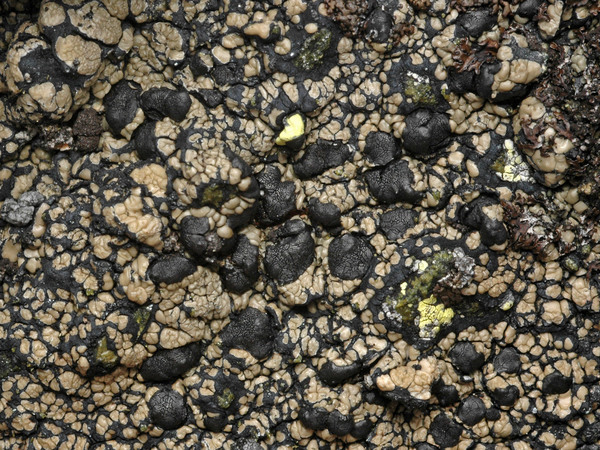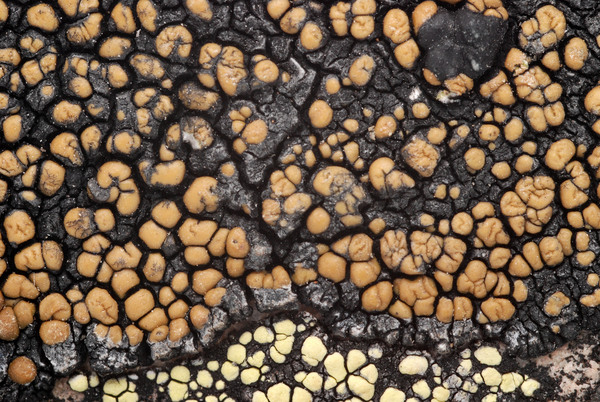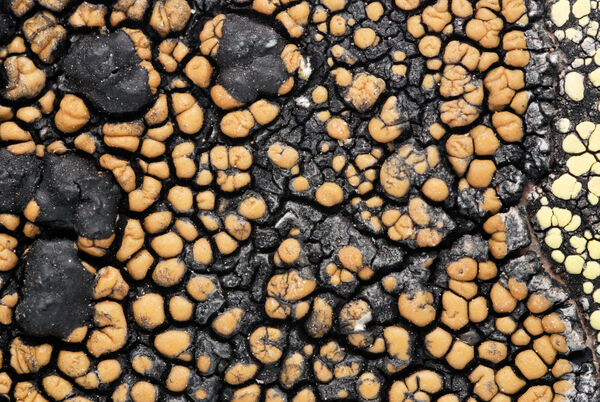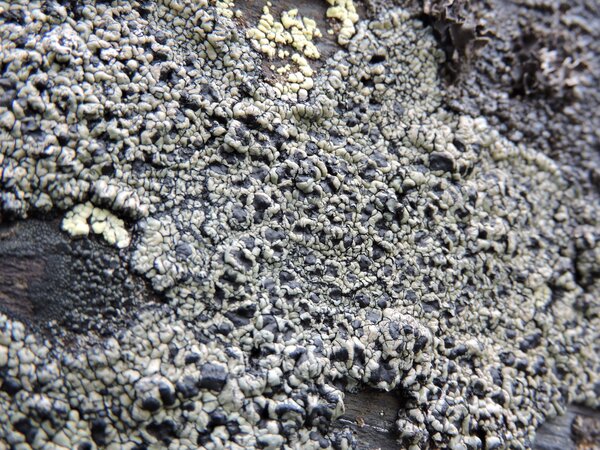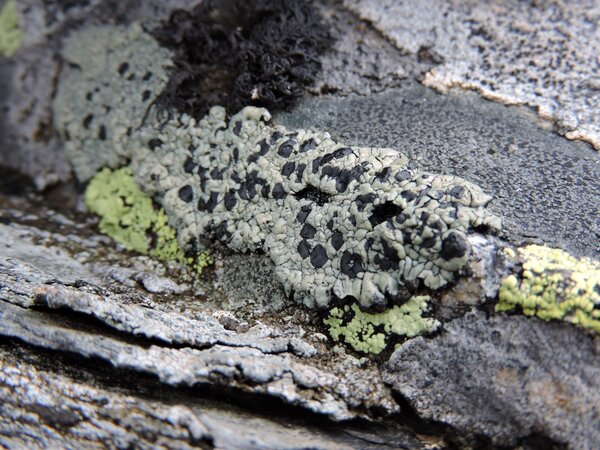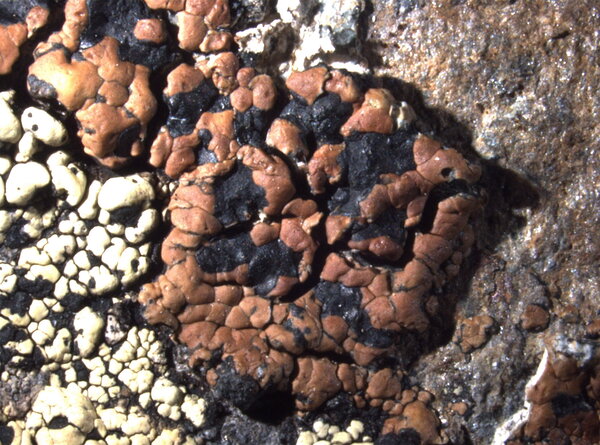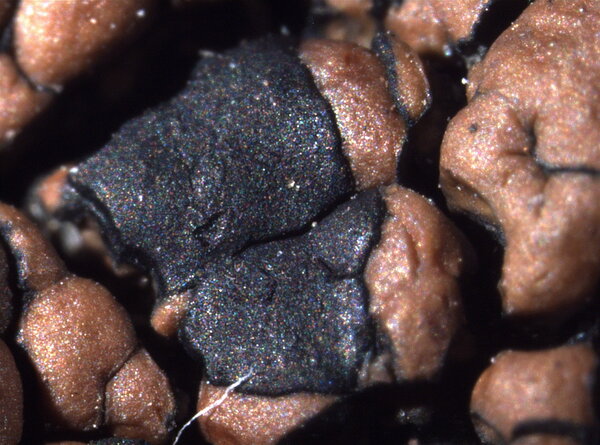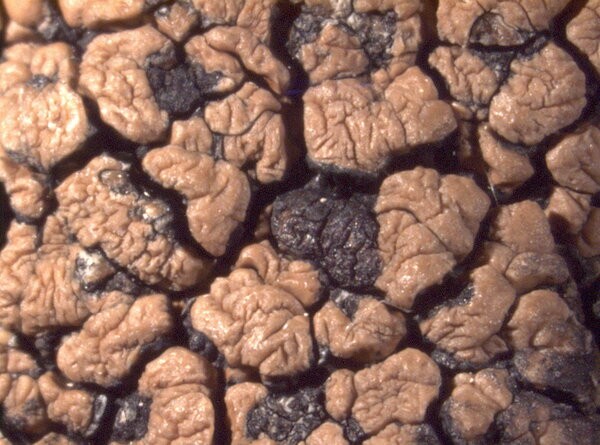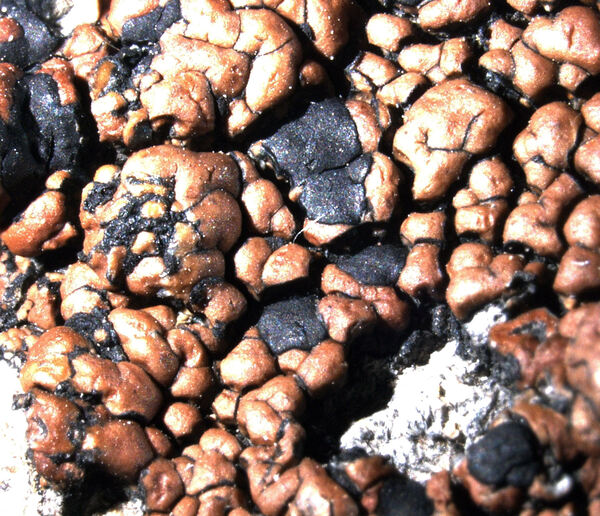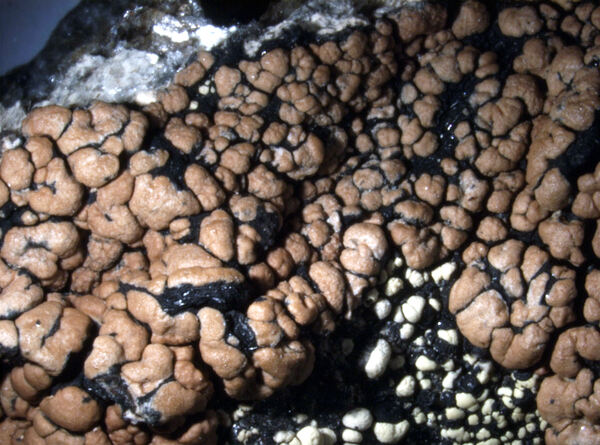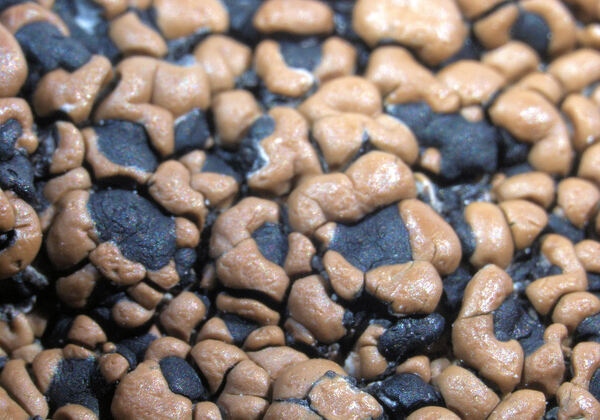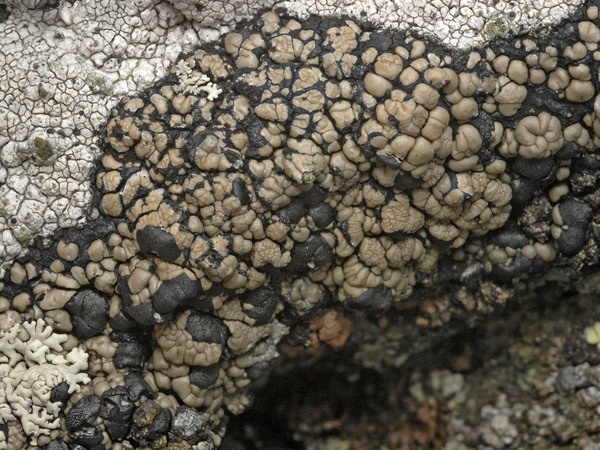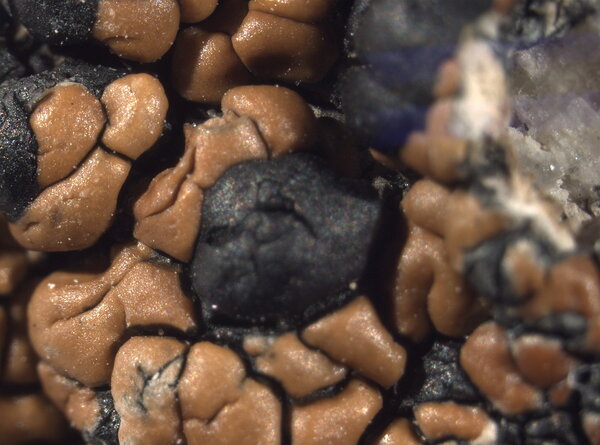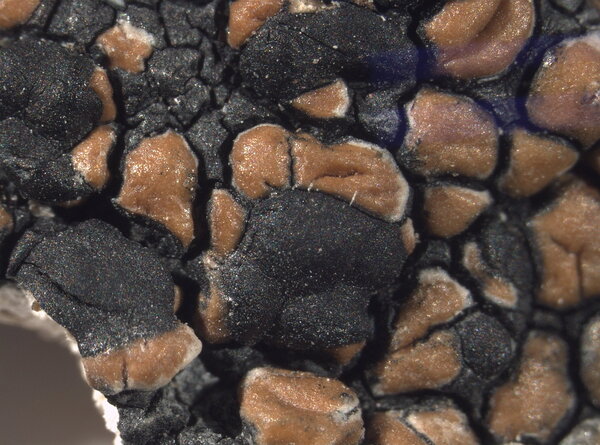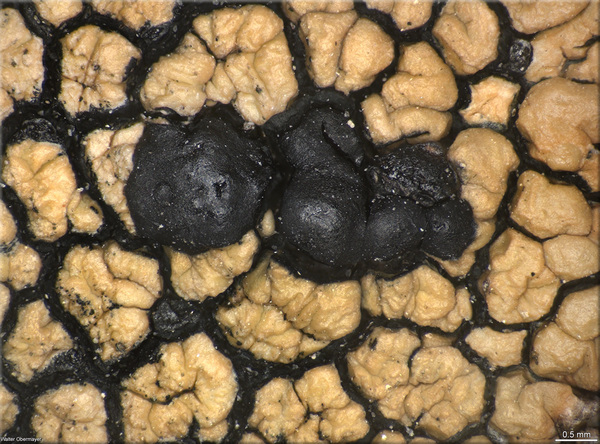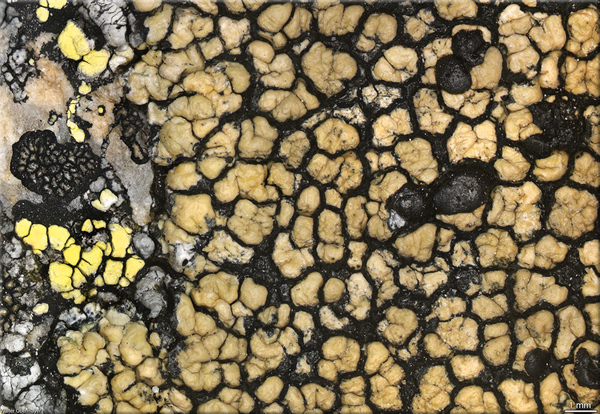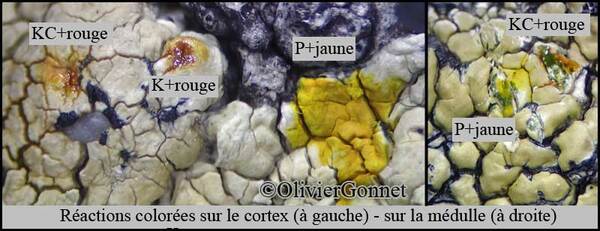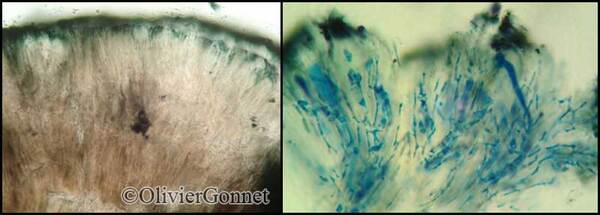Calvitimela armeniaca (DC.) Hafellner
in Hafellner & Türk, Stapfia, 76: 151, 2001. Basionym: Rhizocarpon armeniacum DC. in Lamarck & de Candolle - Fl. Franç., éd. 3, 2: 367, 1805.
Synonyms: Lecidea aglaeotera Nyl.; Lecidea armeniaca (DC.) Fr.; Lecidea armeniaca f. aglaeoides Nyl.; Lecidea nigrita Schaer.; Lecidea spectabilis Flörke; Lecidella armeniaca (DC.) Bagl.; Lecidella spectabilis (Flörke) Körb.; Oedemocarpus armeniacus (DC.) Trevis.; Psora armeniaca (DC.) A. Massal.; Psora spectabilis (Flörke) Anzi; Psora spectabilis var. armeniaca (DC.) Anzi; Psora spectabilis var. lutescens Anzi; Psora viridiatra (Wulfen) Anzi; Tephromela armeniaca (DC.) Hertel & Rambold
Distribution: N - Frl (Tretiach & Hafellner 2000), Ven (Hertel & Schuhwerk 2010), TAA (Grube & al. 2004, Hertel & Schuhwerk 2010, Nascimbene & al. 2022), Lomb (Dalle Vedove & al. 2004), Piem (Isocrono & al. 2004, Watson 2014), VA (Piervittori & al. 1998, 2001, Piervittori & Isocrono 1999, Hertel & Schuhwerk 2010), Emil (Tretiach & al. 2008, Fariselli & al. 2020), Lig. C - Tosc, Sar.
Description: Thallus crustose, episubstratic, areolate to areolate-verrucose, yellowish green, turning brownish in the herbarium, often glossy, of 0.5-4 mm wide, contiguous and convex areoles developing on a black hypothallus, forming up to 10 cm wide patches, often delimited by a black prothallus. Cortex pale grey in upper part, 40-60 µm thick, with a 15-40 µm thick epinecral later; medulla white, I-. Apothecia biatorine, black, (0.5-)2-3(-4.5) mm across, with an initially flat, then irregularly convex, epruinose disc, without a distinct proper margin. Proper exciple strongly reduced; epithecium bluish green-black, sometimes in part brown, N+ violet; hymenium colourless, 40-60 µm high; paraphyses coherent, strongly swollen in water, 4-5.5 µm thick at base, the apical cells 5-8 µm wide; hypothecium colourless in upper part, pale yellow-brown in lower part. Asci 8-spored, clavate, the K/I+ blue tholus penetrated by a faintly amyloid apical cushion with parallel or diverging flanks, the wall K/I-, surrounded by a K/I+ blue outer layer, Lecanora-type. Ascospores 1-celled, hyaline, ellipsoid, 7-12(-15) x 3-4.5(-5) µm, thick-walled. Pycnidia dark brown, immersed, the wall greenish around the ostiole. Conidia hyaline, bacilliform to thread-like, 6.5-10 x 1.5-1.8 µm. Photobiont chlorococcoid. Spot tests: cortex: K+ yellow or orange-red, C+ red, KC+ red, P- or P+ yellow; medulla K-, KC+ red, P+ yellow. Chemistry: medulla with alectorialic acid (major), alectorialin, barbatolic, roccellic and protocetraric acids (all accessory).Note: an arctic-alpine, circumpolar species found on hard siliceous rocks in wind-exposed situations, most common in the Alps, much rarer in the mountains of Southern Italy; when young, it is a facultative parasite of Sporastatia testudinea. A dubious record from Campania reported by Nimis (1993: 682) and by Ricciardi & al. (2000) is not accepted here. The very similar Calvitimela melaleuca (Sommerf.) R. Sant. was reported from the Alps by Jatta (1909-1911) without indication of locality, and is also known from Switzerland and France.
Growth form: Crustose
Substrata: rocks
Photobiont: green algae other than Trentepohlia
Reproductive strategy: mainly sexual
Commonnes-rarity: (info)
Alpine belt: common
Subalpine belt: very rare
Oromediterranean belt: extremely rare
Montane belt: absent
Submediterranean belt: absent
Padanian area: absent
Humid submediterranean belt: absent
Humid mediterranean belt: absent
Dry mediterranean belt: absent
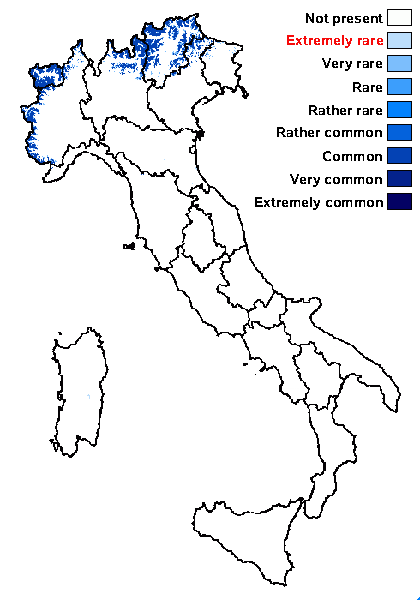
Predictive model
Herbarium samples
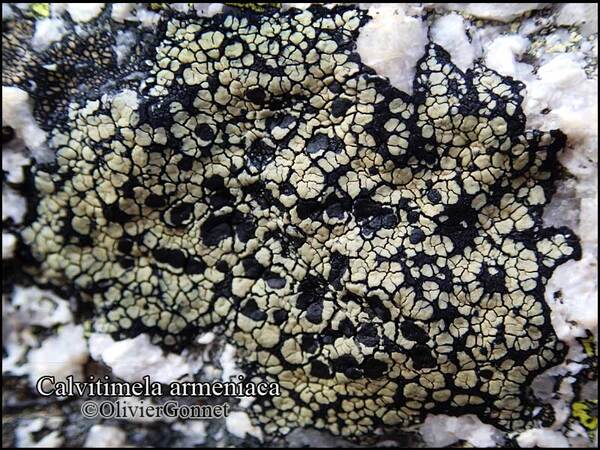
Courtesy: Olivier et Danièle Gonnet - Source: https://www.afl-lichenologie.fr/Photos_AFL/Photos_AFL_C/Textes_C3/Calvitimela_armeniaca.htm
France, Capanella, lac de Bastini - Corse
18/12/2013


P.L. Nimis; Owner: Department of Life Sciences, University of Trieste
Herbarium: TSB (34344)
2002/01/07
a young thallus on the right, growing on Sporastatia testudinea on the left
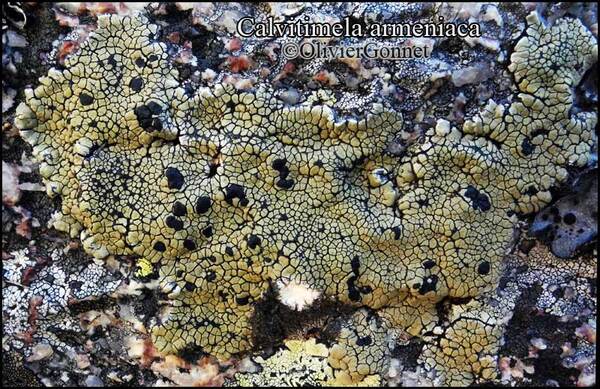
Courtesy: Olivier et Danièle Gonnet - Source: https://www.afl-lichenologie.fr/Photos_AFL/Photos_AFL_C/Textes_C3/Calvitimela_armeniaca.htm
France, Capanella, lac de Bastini - Corse
18/12/2013
Growth form: Crustose
Substrata: rocks
Photobiont: green algae other than Trentepohlia
Reproductive strategy: mainly sexual
Commonnes-rarity: (info)
Alpine belt: common
Subalpine belt: very rare
Oromediterranean belt: extremely rare
Montane belt: absent
Submediterranean belt: absent
Padanian area: absent
Humid submediterranean belt: absent
Humid mediterranean belt: absent
Dry mediterranean belt: absent

Predictive model
| Herbarium samples |

Courtesy: Olivier et Danièle Gonnet - Source: https://www.afl-lichenologie.fr/Photos_AFL/Photos_AFL_C/Textes_C3/Calvitimela_armeniaca.htm
France, Capanella, lac de Bastini - Corse
18/12/2013


P.L. Nimis; Owner: Department of Life Sciences, University of Trieste
Herbarium: TSB (34344)
2002/01/07
a young thallus on the right, growing on Sporastatia testudinea on the left

 INDEX FUNGORUM
INDEX FUNGORUM
 GBIF
GBIF
 DOLICHENS
DOLICHENS

